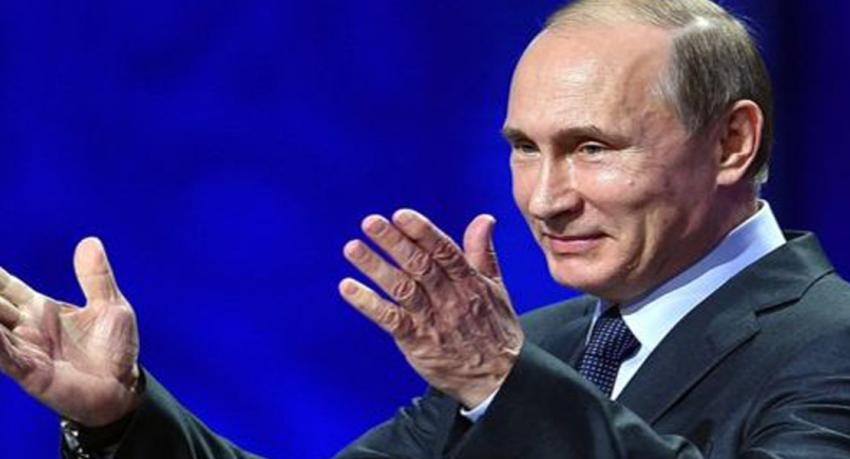Will Ukraine be Putin’s Vietnam?

History is replete with examples where great powers have fallen into ruin, sucked in over wars in smaller nations.
Napoleon and Hitler saw their dreams of world domination shattered when they invaded Russia. Afghanistan proved to be more than either the Soviet Union or the United States could handle. Successive US presidents saw their political careers ruined by the war in Vietnam.
Has Vladimir Putin also bitten off more than he can chew?
Russian forces have been reeling from waves of Ukrainian counterattacks over the last six weeks and the war has now reached Ukraine’s border with Russia, prompting Putin to send reinforcements to Russian border towns. Such is his predicament that even the threat of using nuclear weapons against his non-nuclear adversary is on the table.
On paper, it should never have come to this. Ukraine has 41 million people; Russia has 144 million. Ukraine had a small standing army; Russia had one of the most powerful militaries in the world. Perhaps worst of all, Ukraine’s strategic position seemed hopeless – surrounded on three sides by enemy forces – north, south and east. Most of Ukraine’s major cities are close to the borders and could thus be easily overrun. Within days, Russian troops were besieging the capital Kyiv, the second largest city Karkhiv and many other urban centers.
But wars are not fought on paper. Eight months later, the Ukrainian military is confidently on the offensive, beating back Russian forces. Smart weapons poured in by NATO allies have made an enormous difference, while Ukrainian men and women are fighting tooth and nail for their homes and cities.
Claims of the number of dead in this war range from 70,000 to 100,000, with exact numbers impossible to determine yet in the fog of war. The Ukrainian government claims that over 60,000 Russian soldiers have been killed.
For Ukraine, there appears to be no stopping until Russian forces are evicted from its soil. Its population is mostly concentrated in the east and southeast, exactly the areas that Russia has been attacking, including the regions of Luhansk, Donetsk, Kherson and Zaporizhzhia which Russia has sought to annex. To accept the status quo with Russian troops still on Ukrainian soil, would be to leave its cities in constant danger of further assault. No less than 16 of Ukraine’s 20 largest cities are located near the borders of Russia and Russia’s ally Belarus, putting them directly under threat – Kyiv, Karkhiv, Odessa, Dnipro, Donetsk, Zaporizhzhia, Kryvyi Rih, Mykolaiv, Mariupol, Luhansk, Makiivka, Sevastopol, Simferol, Chernihiv, Kherson and Poltava.
Attempts by neutral nations such as Turkey to broker ceasefires have largely failed.
The United States, NATO and other allies are also in no mood to compromise. Finnish Prime Minister Sanna Marin declared: “The way out of the conflict is for Russia to leave Ukraine.”
For NATO, formed in 1949 to combat the threat of invasion from Soviet Russia, the stakes are high, having recently expanded to Russia’s very doorstep. NATO members now include several former Soviet republics – Latvia, Lithuania, Estonia – and many East European states that had been in the Soviet sphere – Poland, Romania, Bulgaria, Czech Republic, Slovakia and Hungary. Following the invasion of Ukraine, two states that have been neutral for a century – Sweden and Finland – applied for and received approval to join NATO. Ukraine itself is seeking fast tracked NATO membership. Putin, the Cold War warrior, already has no less than eight NATO states directly bordering Russia and doesn’t want any more.
It is unclear if the onset of winter in December will have a major effect on military operations. Ukraine’s climate is generally much milder than the harsh Russian winter. But temperatures do average minus 2 degrees Celsius from December to March with January being the coldest. Armies don’t march well in freezing conditions, giving defenders a significant advantage, which seems to rule out a winter offensive by Russia.
For Russia the negative economic consequences have been serious, although not as crippling as initially expected when the West imposed economic sanctions. The country has been isolated in key areas such as international banking and trade, and Aeroflot had much its fleet seized. But latest estimates are that its GDP will shrink by 4-5 percent, rather than the 12 percent that was predicted eight months ago.
What is clear however is that Putin’s already dented legacy will continue to weaken, the longer the war drags on. Signs of his desperation could be seen when he began making direct threats to use nuclear weapons, taking the world to the brink of Armageddon.
Whatever the final outcome may be, one thing is certain. The short conflict that Putin envisaged with his military behemoth overwhelming its smaller adversary, never materialized. Instead, both sides are now resigned to this being a long drawn out war, which may turn out to be Putin’s Vietnam.
